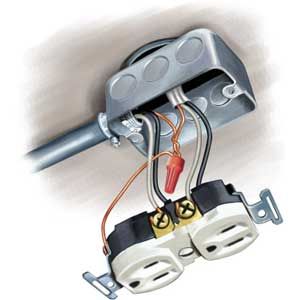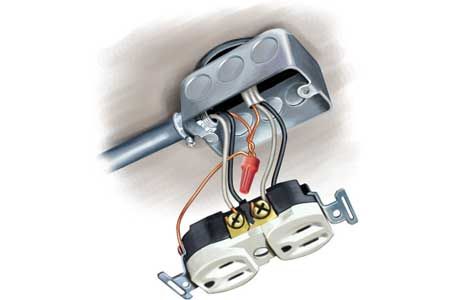Whether you’re tired of relying on extension cords or need more power for your workshop projects, installing new outlets and boosting your garage’s electrical capacity can make a world of difference. This guide will walk you through how to upgrade your garage’s electrical system, from understanding the basics to advanced improvements.

Why You May Need Garage Electrical Upgrades
Many homeowners find their garage’s existing electrical setup inadequate for their needs. Limited outlets, insufficient power capacity, or outdated wiring can hinder your ability to use power tools, charge electric vehicles, or set up a functional workspace. Upgrading your garage’s electrical system not only improves convenience but also increases safety by reducing the risk of overloaded circuits and fire hazards.
Upgrading the electrical system in your garage can transform it from a mere vehicle storage space into a versatile workshop or even an additional living area. The improvements can support a range of activities from carpentry to crafting, making your garage an essential part of your home. Sometimes, homeowners might even want to accommodate a home gym or a small appliance repair station, which requires reliable and accessible power sources.
Safety Considerations for Garage Wiring Projects
Safety should be your top priority when working on any electrical project. Garage electrical work has specific requirements and best practices to keep your home and family safe.
GFCI Protection Requirements
Ground Fault Circuit Interrupter (GFCI) protection is necessary for garage outlets. The National Electrical Code mandates that all garage wall outlets must be GFCI outlets or standard outlets protected by GFCI circuit breakers. This helps prevent electric shock in potentially damp environments.
Using GFCI outlets is especially important in garages where standing water, dampness, and even high humidity levels are common. GFCI protection instantly shuts off power if it detects an imbalance between the incoming and outgoing current, preventing potentially life-threatening electric shocks. It’s not just a recommendation; it’s a legal requirement aimed at saving lives.
Proper Grounding Techniques
Proper grounding is essential for any electrical system, especially in garages where power tools and equipment are frequently used. Make sure all metal boxes and conduits are correctly grounded to prevent electrical hazards. A continuous ground wire should run from the metal box to the GFCI and then to the standard outlet.
Correct grounding creates a stable pathway for electrical current to travel safely, reducing the risk of electrical shocks and fires. Furthermore, grounding helps protect your sensitive electronics and power tools from voltage spikes that can cause damage. If you’re unsure about grounding techniques, consult a licensed electrician to guarantee safety and compliance with codes.
Essential Tools and Materials for Garage Electrical Work
The specific materials and tools you need will vary depending on the extent of your project, but several essentials apply to most garage electrical upgrades. Preparation and thorough planning can save you time and money and help you avoid frequent trips to the hardware store.
Conduit and Wiring Essentials
For most garage electrical projects, you’ll need:
- 1/2-inch-diameter thin-wall metal tubing (conduit)
- 12-gauge single-strand copper wires (white, black, and green)
- Conduit connectors
- Preformed 90-degree conduit elbows
- Wire strippers and cutters
Metal conduits protect wires from physical damage and help maintain a tidy, organized appearance. PVC conduits are also an option but may not offer the same level of durability. When selecting wire strippers and cutters, invest in high-quality tools to check for clean cuts and fittings.
Outlet Types and Boxes
Pick outlet boxes that have adequate space to accommodate multiple wires and connections. Metal boxes provide better durability and protection, particularly in a rugged environment like a garage. Cover plates improve appearance while adding an extra layer of protection.
- 4-inch-square metal boxes: Ideal for housing multiple outlets or switches, these boxes provide ample space for wiring.
- Cover plates: Cover plates serve as a protective barrier for electrical outlets and switches, preventing dust and debris from entering the box. They come in various styles and finishes, allowing for customization while ensuring compliance with safety regulations.
- GFCI outlets: GFCI outlets are essential in areas prone to moisture, such as kitchens and bathrooms, as they protect against electrical shock by shutting off power if a ground fault is detected.
- Standard grounded outlets: Standard grounded outlets provide a reliable and safe way to connect electrical devices to the power supply. Featuring a third grounding prong, they reduce the risk of electrical shock and ensure that devices operate efficiently and safely.
Step-by-Step Guide to Installing a New Garage Outlet
Follow these steps to add a new outlet to your garage, tapping into an existing power source. Always remember to cut the power at the main breaker panel before starting any electrical work to avoid the risk of electric shock.
Tapping Into Existing Power Sources
Begin by identifying a suitable power source, such as a ceiling outlet. Check that the circuit has enough capacity to handle the additional load of the new outlet. Turn off the power to the circuit at the main breaker panel before starting work.
You can use a voltage tester to make sure the circuit is deactivated. Confirming adequate circuit capacity can prevent overloads and potential electrical hazards. Plan your wiring route carefully to minimize the length of conduit runs and the number of bends, which will make pulling wires easier.
Running Conduit Across Ceiling and Walls
Measure and plan your conduit route from the power source to the new outlet location. Use a conduit bender to create custom bends, or opt for preformed 90-degree elbows for easier installation. Secure the conduit to the ceiling and walls using appropriate fasteners and connectors.
When planning the conduit route, consider future needs and allow for possible additional outlets or upgrades. Avoid running conduits near heat sources or areas prone to mechanical damage. Using straps and fasteners every 4 feet provides a secure installation, maintaining an organized and tidy workspace.
Pulling Wires Through Conduit
Once the conduit is in place, it’s time to run the wires:
- Cut three 12-gauge wires (white, black, and green) to the appropriate length, allowing extra for connections.
- Use a fish tape to pull the wires through the conduit.
- Leave enough wire at each end to make connections.
Running wires through the conduit can be tricky. Use lubricant designed for electrical wires to ease the pulling process. Make sure you have ample wire length at each end to make secure connections, which helps avoid the need for splicing if adjustments are required later.
Installing and Wiring the Outlet Box
Install the 4-inch-square metal box at the end of the conduit run. Follow these steps to wire the outlets:
- Connect the white wire to the top, left-side terminal screw on the standard outlet and the top, left-side “load” terminal on the GFCI.
- Connect the black wire to the top, right-side terminal screw on the standard outlet and the top, right-side “load” terminal on the GFCI.
- Connect the ground wire to the metal box, GFCI, and standard outlet.
- Secure the outlets in the box and attach the cover plate.
Double-check all connections for correct placement and tightness. A loose connection can cause arcing and overheating, which are fire hazards. After wiring, turn the power back on and test the outlet using a plug tester to confirm the correct installation and operation.
Advanced Garage Electrical Upgrades
Once you’ve mastered basic outlet installation, think about these advanced upgrades to improve your garage’s electrical capabilities further. These projects, while more complex, are worth the investment for those who frequently use their garage as a workspace.
Adding a Dedicated Circuit for Power Tools
For workshops with high-powered tools, a dedicated circuit can prevent overloads and provide consistent power. This involves running a new circuit from your main panel to the garage, which may require professional assistance.
Dedicated circuits help your high-powered tools, such as table saws and air compressors, receive consistent voltage without causing excessive strain on existing circuits. This setup can prevent tripped breakers and potential fire hazards. Hiring an electrician for this type of upgrade easily helps the work meet safety standards and local codes.
Installing Overhead Lighting Solutions
Improve visibility in your garage by upgrading the lighting. Consider installing LED shop lights or adjustable track lighting to illuminate your workspace effectively. Check that the new lighting is properly wired and controlled by easily accessible switches.
LED shop lights offer energy efficiency and a long lifespan, making them an excellent investment. Adjustable track lighting gives you the flexibility to direct light where it’s needed most. When installing, make sure switches are within easy reach and consider adding dimmers for customized lighting control.
Incorporating Smart Home Technology
Transform your garage into a smart space with the incorporation of smart home technology. With devices such as smart lighting, advanced security cameras, and automated climate control, you can achieve increased convenience and security within your garage. Integrating these systems can often involve compatibility with your existing home automation system and might require professional assistance for optimal results.
Smart lighting systems enable you to control the lighting in your garage using your smartphone or voice commands, adding a layer of convenience. Security cameras can be set to alert you to any unusual activity, providing peace of mind. Automated climate control, such as smart thermostats, can help your garage maintain a comfortable temperature, especially if you’re using it as a workspace or gym.
Charging Stations for Electric Vehicles
With the rise of electric vehicles, having a dedicated and efficient charging station in your garage is becoming increasingly important. Upgrading your garage’s electrical system to support fast-charging stations can save you time and improve energy efficiency. This type of project typically requires professional installation to comply with safety standards and optimal performance.
Fast-charging stations can drastically reduce the time it takes to charge your vehicle compared to standard outlets. These stations are designed to deliver higher amperage, often requiring an updated electrical panel and professional installation. Making sure your charging station is installed by a certified electrician guarantees that the work adheres to safety codes and maximizes efficiency.
Maintaining and Troubleshooting Garage Electrical Systems
Regular maintenance and prompt troubleshooting will keep your garage’s electrical system safe and functional.
Regular Inspection Checklist
Perform these checks annually:
- Check for loose connections
- Inspect wires and conduits for damage
- Test GFCI outlets
- Verify proper grounding
Routine inspections help spot potential issues before they become significant problems. Testing GFCI outlets helps make sure they function correctly, reducing the risk of electric shock. Inspecting wires and conduits can reveal wear and tear, allowing you to replace components before they fail.
Common Issues and Their Solutions
Be prepared to address these common garage electrical problems:
- Flickering lights: Often caused by loose bulbs or wiring issues
- Nonfunctioning outlets: This could be due to a tripped GFCI or loose connection
- Tripping circuit breakers: May indicate an overloaded circuit or faulty wiring
Addressing these common problems can typically resolve most minor electrical issues. Regularly checking and maintaining your system keeps it running efficiently and safely. When in doubt, consulting a professional is always a smart choice to avoid mishaps.

